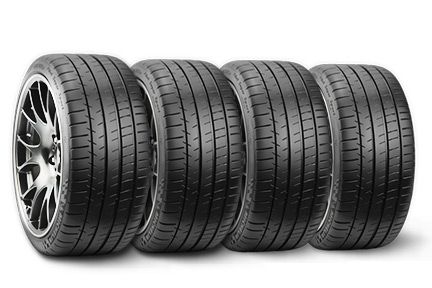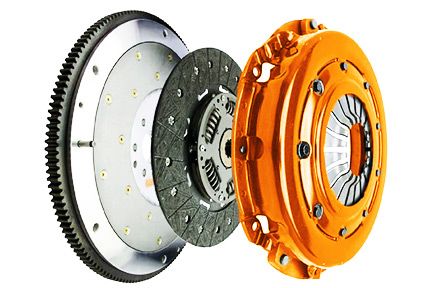Car Maintenance 101: A Beginner’s Guide to Keeping Your Vehicle in Top Shape
Posted Wednesday, May 24, 2023
Owning a car is a significant investment, and like any other investment, it requires proper care and maintenance to ensure it stays in top shape. Whether you're a new driver or a seasoned one, understanding the basics of car maintenance is essential to keep your vehicle running smoothly, safely, and efficiently. In this beginner's guide to car maintenance, we'll cover everything you need to know to keep your car in tip-top shape, from regular oil changes and tire rotations to checking your brakes, fluids, and filters. We'll also discuss some simple DIY maintenance tips that you can easily do at home to save money and extend the life of your car. So, buckle up and get ready to learn the fundamentals of car maintenance so that you can hit the road with confidence, knowing that your vehicle is in excellent condition.
Why is car maintenance important?
Car maintenance is essential for several reasons. Firstly, it ensures that your vehicle runs efficiently and smoothly, reducing the risk of breakdowns and costly repairs. Regular maintenance helps to identify small problems before they become significant issues, allowing you to fix them before they cause more significant damage. Additionally, proper maintenance helps to increase the lifespan of your vehicle, reducing the need for you to replace it sooner than necessary.
However, the most important reason to maintain your vehicle is safety. A well-maintained vehicle is less likely to break down, and its components are less likely to fail while driving, reducing the risk of accidents. Regular maintenance ensures that your brakes, tires, and other safety features are in top condition, keeping you and your passengers safe on the road.
In short, vehicle maintenance is essential for the smooth running of your vehicle, cost-effectiveness, and safety.
Basic car components and their functions
Before you can start maintaining your vehicle, it's essential to understand the basic components and their functions. Here are some of the most critical parts of your vehilce:
**Engine:** The engine is the heart of your car and is responsible for converting fuel into energy to power the vehicle.
**Transmission:** The transmission transfers power from the engine to the wheels.
**Brakes:** The brakes are responsible for stopping your car and are made up of several components, including brake pads, calipers, rotors, and brake lines.
**Tires:** Tires are responsible for providing traction and stability on the road and need to be in good condition to ensure safe driving.
**Battery:** The battery provides power to start your car and keep it running.
**Fluids:** Your car has several fluids, including oil, transmission fluid, brake fluid, and coolant, which need to be checked and changed regularly to keep your car running smoothly.
Knowing the basic components and their functions will help you understand how your car works and enable you to identify any problems quickly.
Common car problems and how to diagnose them
Despite your best efforts, sometimes problems can occur with your car. Here are some of the most common car problems and how to diagnose them:
**Engine problems:** Engine problems can manifest in several ways, including strange noises, poor acceleration, and decreased fuel efficiency. If you notice any of these signs, it's important to take your car to a mechanic for a diagnosis.
**Battery issues:** If your car won't start, the battery is often the culprit. Check for any corrosion on the battery terminals, loose connections, or a dead battery.
**Brake problems:** If your brakes feel spongy or make a grinding noise, it's a sign that there is a problem with the brakes. Take your car to a mechanic immediately to avoid any accidents.
**Tire issues:** If you notice that your car pulls to one side or that the steering wheel vibrates, it could be a sign of tire problems. Check for any punctures or damage to the tires and have them replaced if necessary.
In general, it's always best to take your car to a mechanic for diagnosis and repair. However, understanding the signs of common problems can help you identify issues early and prevent them from getting worse.
For more information about the dashboard warning please read our article "Warning Lights In Your Car Dashboard, What Does It Mean."
Essential tools for car maintenance
While some vehilce maintenance tasks require the help of a mechanic, there are several things that you can do yourself with the right tools. Here are some essential tools for car maintenance:
**Socket set:** A socket set is essential for removing and tightening bolts and nuts.
**Oil filter wrench:** An oil filter wrench makes it easier to remove and replace the oil filter.
**Jack and jack stands:** A jack and jack stands are essential for raising your car to access the underside.
**Tire pressure gauge:** A tire pressure gauge is essential for checking the pressure of your tires.
**Funnel:** A funnel makes it easier to add fluids to your car without spilling.
Having these tools on hand will make it easier to perform basic maintenance tasks at home.
How to change a flat tire
One of the most common problems that drivers face is a flat tire. Changing a flat tire is a basic skill that every driver should know. Here's how to do it:
1. Find a safe location to change the tire, away from traffic.
2. Use your lug wrench to loosen the lug nuts on the flat tire.
3. Raise your car with a jack and place the jack stands under the car.
4. Remove the lug nuts and the flat tire.
5. Place the spare tire on the car and tighten the lug nuts.
6. Lower the car and use your lug wrench to tighten the lug nuts further.
7. Check the tire pressure of the spare tire and inflate it if necessary.
8. Take your flat tire to a mechanic for repair or replacement.
Changing a flat tire is a straightforward process, but it's essential to follow the steps carefully to ensure your safety.
Checking and changing the oil and other fluids
Checking and changing your car's fluids is essential for keeping it running smoothly. Here's how to do it:
1. Park your car on a level surface and let the engine cool down.
2. Locate the dipstick for the engine oil and remove it.
3. Wipe the dipstick clean and reinsert it to check the oil level.
4. If the oil level is low, add oil slowly, checking the level frequently.
5. Check the transmission fluid, brake fluid, and coolant levels, and add more if necessary.
6. Replace any fluids that are dirty or discolored.
7. Take your car to a mechanic if you notice any leaks or strange smells.
Checking and changing your car's fluids is a simple task that can help prevent costly repairs and keep your car running smoothly.
Replacing air filters
Air filters are responsible for keeping dirt and debris from entering your engine, and they need to be replaced regularly to ensure that they're working correctly. Here's how to do it:
1. Locate the air filter housing under the hood of your car.
2. Open the housing and remove the old air filter.
3. Clean out any debris from the housing.
4. Insert the new air filter and close the housing.
5. Dispose of the old air filter properly.
Replacing air filters is a simple task that can help improve your car's performance and fuel efficiency.
Maintaining brakes and tires
Your brakes and tires are two of the most critical components of your car, and it's essential to keep them in top condition. Here's how to do it:
1. Check your brake pads regularly and replace them if they're worn down.
2. Inspect your tires for signs of wear, such as low tread depth or cracks in the sidewall.
3. Rotate your tires regularly to ensure even wear.
4. Check your tire pressure regularly and inflate them to the recommended level.
5. Have your brakes and tires inspected by a mechanic at least once a year.
Proper maintenance of your brakes and tires can help prevent accidents and keep you and your passengers safe on the road.
The importance of regular tune-ups and inspections
Finally, it's essential to have your car tuned up and inspected regularly by a mechanic. A tune-up involves replacing spark plugs, air filters, and other components that wear out over time. Regular inspections can help identify problems before they become major issues and can keep your car running smoothly for years to come.
Conclusion and final tips for car maintenance
Maintaining your car is essential for its smooth running, cost-effectiveness, and safety. By understanding the basic components and their functions, knowing how to diagnose common problems, and having the essential tools on hand, you can perform basic maintenance tasks at home. However, it's always best to take your car to a mechanic for diagnosis and repair. By following the tips outlined in this guide and having your car tuned up and inspected regularly, you can extend the life of your vehicle and hit the road with confidence, knowing that your car is in top shape.



